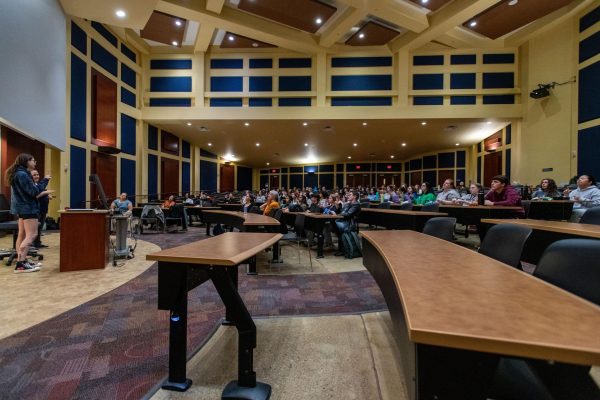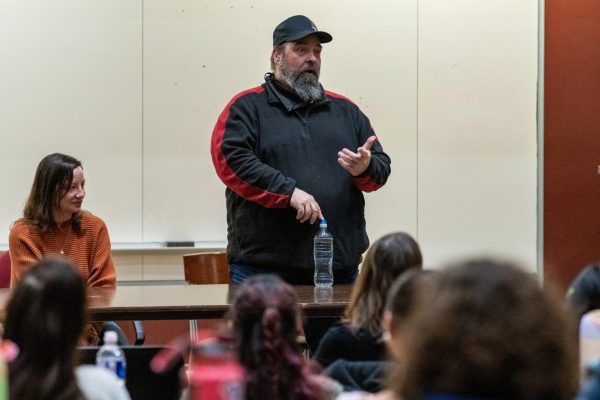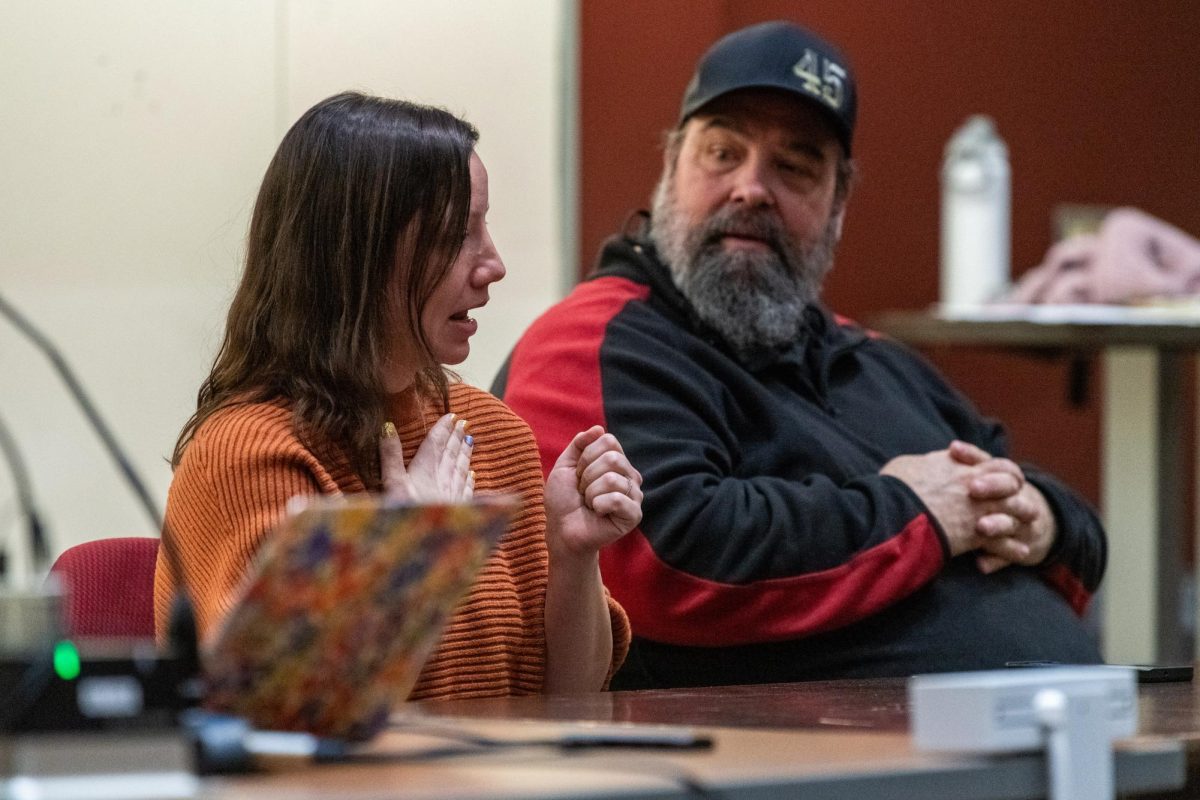Video Remoting Interpreting allows deaf individuals to communicate verbally using translating technology and is commonly used in health care settings. Although Jenna Barkey said she’s preferred an in-person interpreter at appointments ever since a doctor gave her son a vaccine that she and her husband, who’s also deaf, didn’t want him to get.
“My son was about six months old. My husband had to take my son to the doctor, and the interpreter did not show up, and he was very upset,” Barkey, an art teacher at the Western Pennsylvania School for the Deaf, said. “There was a list of vaccinations and ones that we didn’t want, but the VRI was really slow, so he got a vaccination we didn’t want him to get. We said we have to have an in-person interpreter from now on.”
The American Sign Language Club hosted a panel discussion Monday evening titled “Deaf Patient’s Perspective.” The ASL Club hosts this event annually for deaf individuals to share their stories and experiences within the health care field.
“We hope for this event to highlight the unique experiences and perspectives of Deaf patients so that those attending can become more aware of the challenges they face, especially students who are planning to enter the medical field,” Matthew Smith, the ASL Club president, said.
Deaf individuals Steve Kovscek, president of the Pittsburgh chapter of the Hearing Loss Association, and Barkey shared their stories with the audience using ASL with English speaking interpreters. Kovscek was born with the ability to hear, but lost it due to severe illness at age four. Barkey was born deaf and said genetic deafness runs in her family.
“I grew up in the Poconos and moved here seven years ago. I have a son, he is 10 months old and a CODA [Child of Deaf Adults]. He is hearing and my husband and I are both deaf,” Barkey said.
Smith said he grew up using ASL to communicate with his mom, who’s deaf, and wanted to stay involved with the deaf community at college.
“I applied for Pitt’s ASL certificate and joined the ASL Club. I enjoy being involved with the ASL Club, so when the position for president opened I felt prepared to accept it since I had been on the board for two years prior,” Smith said.

Attendees had the opportunity to ask panelists questions. One attendee asked how health care professionals can communicate with patients who have language barriers.
“In a health care situation, that language barrier can lead to misinterpretation, misunderstanding and bad outcomes. I think it’s important to have interpreters and for hard of hearing people to [not] have barriers,” Kovscek said.
Due to the importance of information being clearly communicated in a health care setting, Barkey said she normally prefers an in-person interpreter.
“Health care is very important, and having that interpretation in the room is important because sometimes writing back and forth isn’t clear,” Barkey said.
In order for health care providers to make medical related information more accessible, Barkey said the biggest asset is having an ASL interpreter.
“If there is no ASL interpreter, there is a laptop interpreting similar to Facetime. It’s still an interpreting process, but sometimes the signals are not good,” Barkey said.
While Barkey said in emergency medical situations it can be hard to have an in-person interpreter, she prefers one for scheduled appointments, such as her C-section birth.
“I had a C-section where I preferred an interpreter for my birth. I was going into labor and texted my interpreter,” Barkey said. “It really depends on the interpreter and their preference. I have preferences on what I share and what I don’t. A VRI interpreter for a C-section would be impossible. My sister can come sometimes in an emergency, but most of the time it’s planned before.”

As someone who works for the federal government, Kovscek said he will sometimes communicate with VRI but mainly prefers in-person interviews.
“I can communicate well enough with my hearing aids. My personal experience is I’m OK as long as I make sure they understand,” Kovscek said.
For deaf patients who do not use ASL, many will use cochlear implants, a surgical device that helps with sound perception.
“People assume cochlear implants are the only option, but there are many other options. People need to let your audiologist know they can also learn ASL,” Barkey said.
As Kovscek has friends in health care, he said most medical professionals understand deaf culture and that it is a separate culture, due to sharing a language and common medical conditions.
“The most important thing is to understand the ASL is a language,” Kovscek said.



